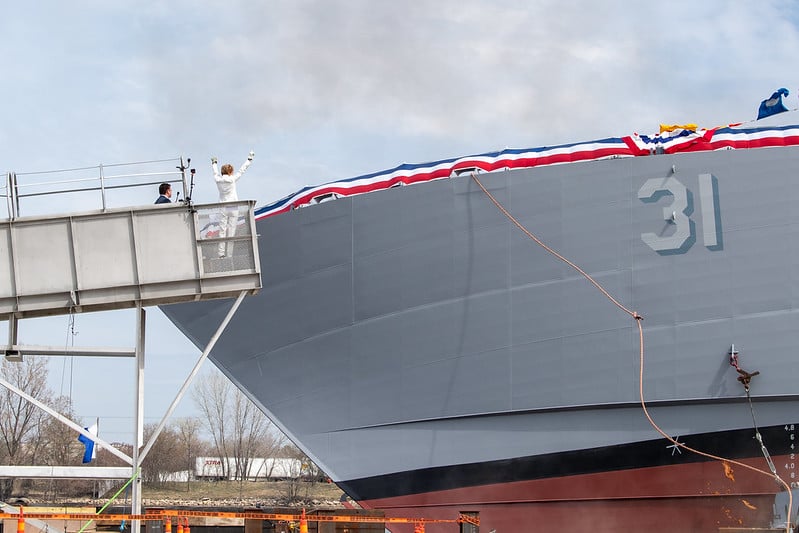
MARINETTE, Wis. – Three ships moored on the Wisconsin side of the Menominee River mark the end of a 20-year-long era of shipbuilding for the United States Navy.
The trio of Lockheed Martin Freedom-class Littoral Combat Ships will leave Fincantieri Marinette Marine and travel through the narrow waterway leading to the Green Bay that feeds Lake Michigan so the yard can make room for the U.S. Navy’s new Constellation-class frigates.
After making $300 million of capital investments across Marinette Marine and its nearby sister yard, Bay Shipbuilding, Fincantieri is shifting its focus from the LCS program to building the new frigates.
Still, with the Freedom-class ships on the way out and that capital investment money to expand its space, this small midwestern yard is nearing capacity.
Three frigates are currently under contract and the Navy is preparing for a saw-tooth procurement plan in the coming years. Between building the Connies and Saudi Arabia’s multi-mission surface combatant – which Fincantieri is the subcontractor for under Lockheed Martin – the yard is maxed out. If the U.S. Navy wants to build more than two frigates a year – officials now say four per year is the ultimate goal – the service will need to have a second shipyard bid for the work.
The “shipyard can’t do more than two because I literally run out of room,” Mark Vandroff, Fincantieri Marinette Marine’s chief executive officer, told USNI News in an interview this month at his Wisconsin shipyard.
“If you’re delivering two a year, it’s two on the waterfront, two in the building and then two ships worth of pieces throughout the yard. The yard is full,” he said. “There’s no room to put anything after that. So if the Navy sometime decides that it wants three or four of these a year, they will need to find a second yard, someone else to do that.”
The Navy wants to buy two frigates in Fiscal Year 2024, kicking off a buying scheme that would see the service alternating between one and two ships each year. That means Marinette is averaging 1.5 hulls per year.
“At 1.5, my manning pressure is somewhat less. I still have to grow to get up to 1.5, but the pressure of hiring is a little less at 1.5 than it is at two,” Vandroff said.
Marinette is ramping up its workforce, launching new initiatives to both recruit and keep employees, but like shipbuilders across the country, hiring is the top challenge.
“We need young people in the country that are willing to take good-paying jobs – I mean I pay our skilled tradesmen well compared to the average blue-collar wage here in Wisconsin and the upper peninsula of Michigan. But it’s a fight for talent – it really is. Labor is scarce,” Vandroff said.
Constellation-class Frigate
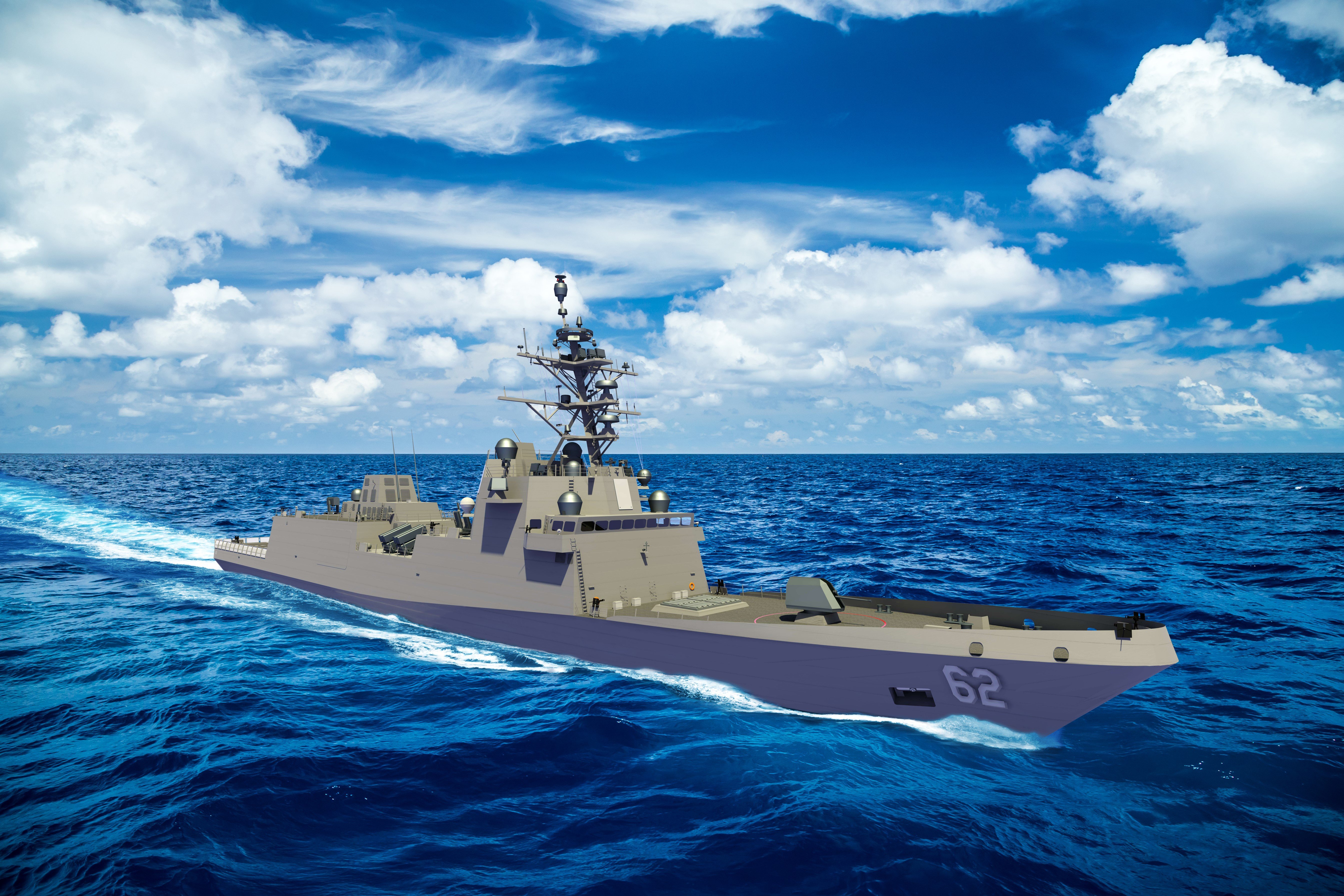
Two and a half years after the Navy issued the detail design and construction contract for the lead ship in the class, Marinette started fabrication on the future USS Constellation (FFG-62) at the end of August 2022.
The service and Fincanctieri wanted to ensure the design – based on the Italian FREMM multi-mission frigate parent design – was mature before the yard began building the ship.
During that process, Vandroff said a report from Naval Surface Warfare Center, Carderock concluded the ship was not stiff enough, requiring design changes that ultimately ate down the schedule margin the yard hoped to have for the first-in-class ship.
“We needed to stiffen the ship in certain sea states. You’ve got too much [of] what’s called vertical bending moments.” Vandroff said during an April 13 interview at his office in Marinette.
“We were already into the functional and detail design when that report came from Carderock – something of a surprise because the parent design didn’t really have that.”
Those design changes made the ship heavier, requiring more adjustments because the Navy wanted the frigate to have margin over its service life to add new systems. This caused more delays, as the Navy and Gibbs & Cox looked for places to remove weight to make the ship lighter.
Despite the delays, the yard is still on track to deliver the lead ship in 2026 as planned.
“I would have liked more time and buffer in case things had gone wrong, but we still have an executable plan to get Constellation delivered in 2026,” Vandroff said.
Unlike other U.S. Navy ships – like the Zumwalt-class guided-missile destroyer and the Ford-class aircraft carriers – the Constellation frigates do not contain much in the way of new technologies that could delay the delivery, Vandroff said.
“The ship’s going to have the SPY-6 radar, but that’s being worked out right now on the Flight III. It’s just a cut down version of that. There’s no technology on the ship that I would point to and say, ‘this has never been tried before. We’re not sure if it’s going to work,’” he said.
“The diesel engines, the gas turbine engine, the navigation system – all are being used somewhere in the world right now and in a lot of cases somewhere in the U.S. Navy.”
To eventually build two frigates per year, Fincantieri made several capital investments at the yard in Marinette, including a new building – known as Building 34 – with two bays, built specifically for the Constellation line, that can hold two-and-half ships inside.
The yard is now working on a ship lift to launch the frigates and a new facility to blast and paint a second ship, which it expects to complete by this fall and the end of 2023, respectively.
Marinette also built a new automated panel line it’s currently using for the new frigate. While the shipyard is learning from its Italian parent company about automation, Vandroff says it can only go so far – the shipyard still needs to hire more people. Last April, Marinette had about 900 people working in the yard. Now it has about 1,100.
“That’s good growth, but I need that same growth this year and I need that same growth again next year if we’re going to execute our full book of business on time,” Vandroff said.
“So we’re working with the state, we’re working with recruiters. We’re working with local schools. We’ve got a lot of different programs that are in place. But if I had to pick what my number one challenge is as far as going forward, it’s recruiting and retaining a skilled workforce to build the ships.”
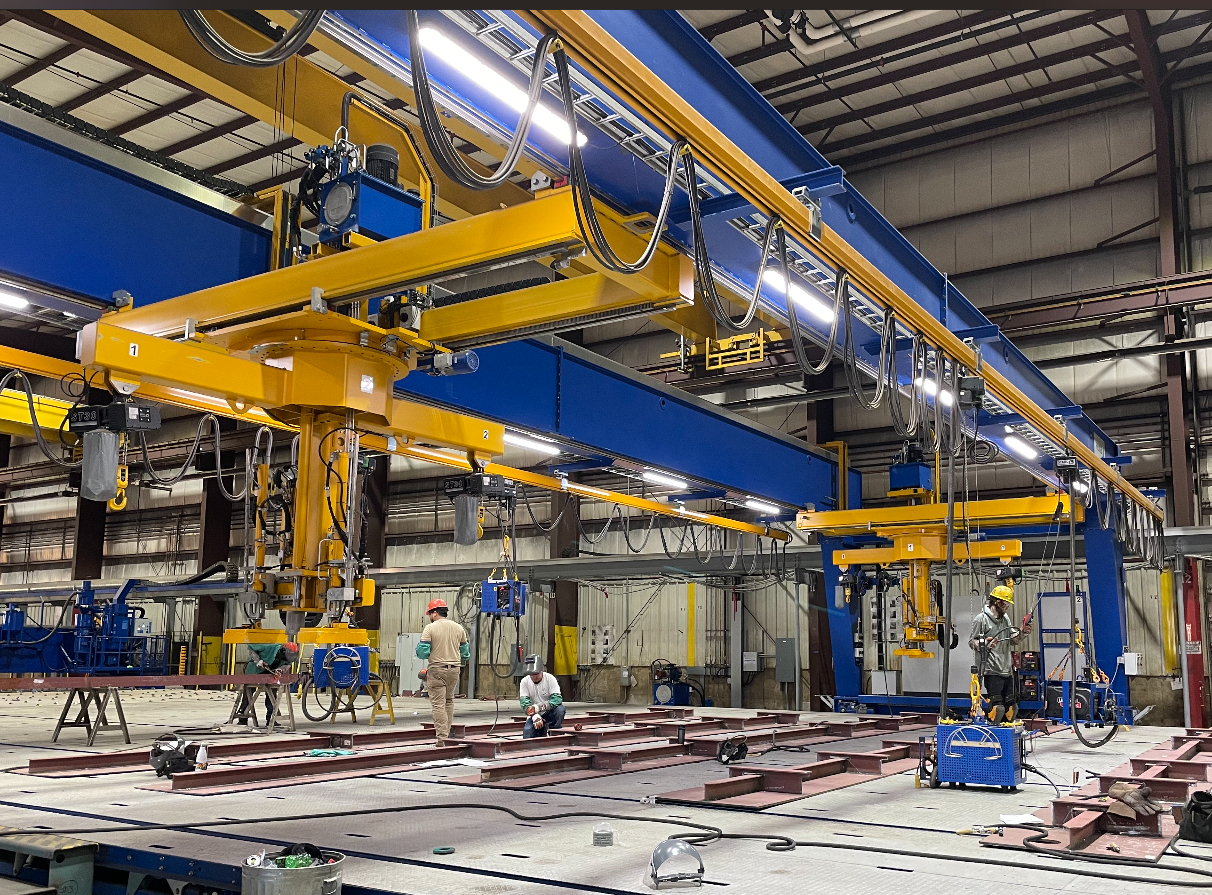 If the Navy puts Marinette on contract to build two frigates per year, its less-populated B shift – which is currently about 10 percent of the approximately 700 Marinette employees and 200 contractors working in the yard during the A shift – would have to become a full shift.
If the Navy puts Marinette on contract to build two frigates per year, its less-populated B shift – which is currently about 10 percent of the approximately 700 Marinette employees and 200 contractors working in the yard during the A shift – would have to become a full shift.
“You have two full shifts working the yard nearly 24 hours a day in order to get to two a year. Absolutely executable. Absolutely doable,” Vandroff said. “It becomes [about] getting and distributing the human capital in order to be able to execute it.”
To that end, Marinette is talking to local high schools and partnering with the nearby technical college to recruit the new talent it needs in the yard to build the frigates.
“If you drive up and down between here and Green Bay and up to Escanaba, you’ll see billboards. You’ll see we’re going into schools with our workforce and holding career days and career fairs. We’ve got partnership agreements with the University of Wisconsin system, with the Wisconsin Technical College, so their junior college system,” Vandroff said.
“We have agreements with them on training, on tuition. So if you want to go to Northeast Wisconsin Technical College, NWTC, and get a welding certificate, between us and the state, you don’t have to pay for that education. You come out with a welding certificate and I hire you immediately as a welder.”
But even once it hires more people, Marinette still can’t build more than two frigates per year, meaning the Navy must turn to a second yard. While Congress, citing design risks, pumped the brakes on the Navy’s plans to have a second shipyard build frigates, officials now say they will need to get a second yard involved. Once the Navy has the technical data package, it could kick off a new competition.
“I think it’s very important … that we could get to the second shipyard and a two-a-year [rate] from each shipyard,” Chief of Naval Operations Adm. Mike Gilday told the Senate Armed Services Committee this month.
Royal Saudi Navy Multi-Mission Surface Combatant
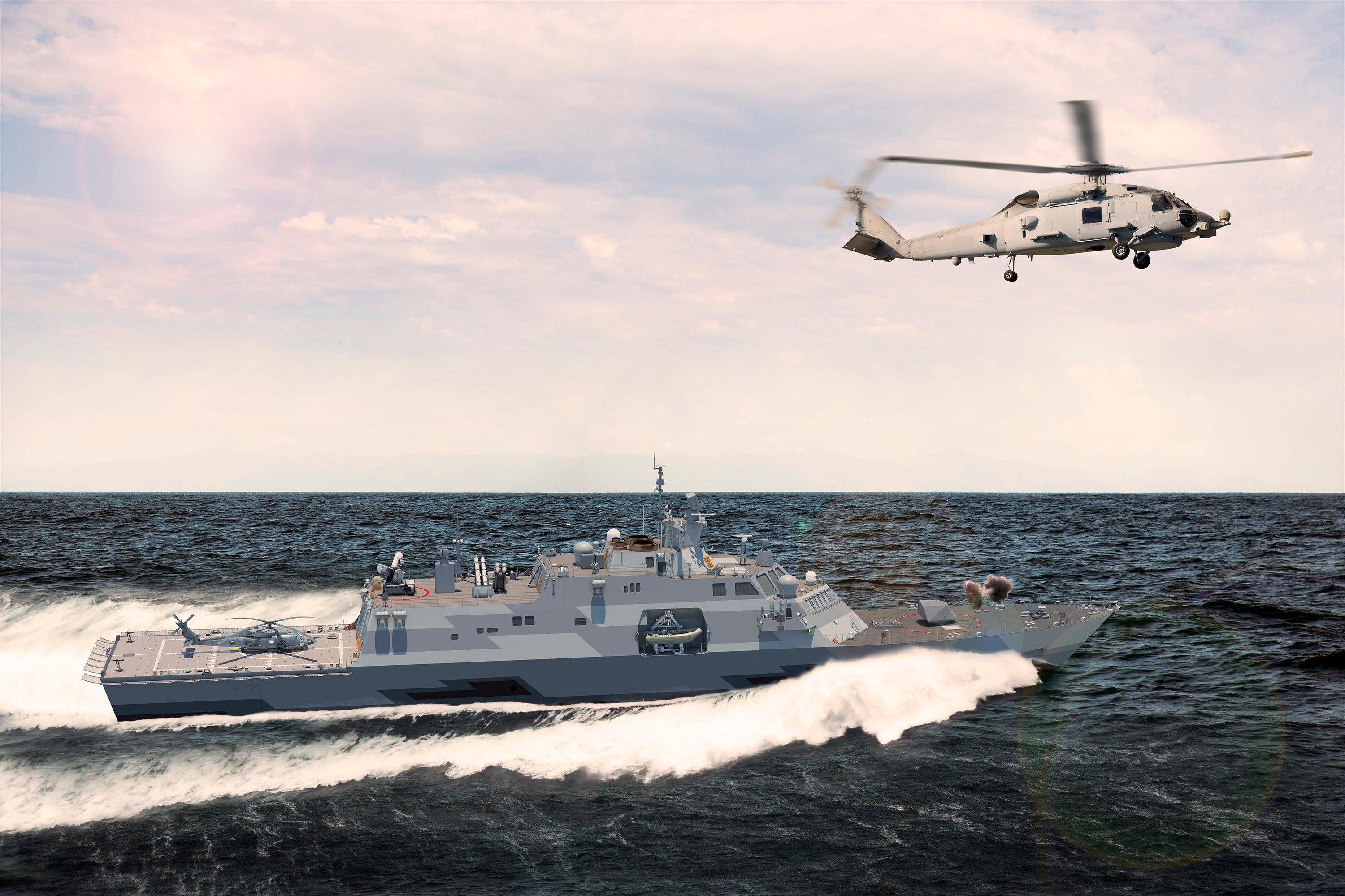
Four multi-mission surface combatants based on the Littoral Combat Ship design are under construction at Marinette for the Royal Saudi Navy. The combatants are in various stages of construction, with the first hull coming together in Building 10 at the yard.
Lockheed Martin won the $1.96 billion construction contract for the four ships, based on a modified Freedom-class hull, in 2017 as part of the $20 billion Saudi Naval Expansion Program II, or SNEP II.
The SNEP II frigates lose the multi-mission space of a Freedom and will feature 16 Mark 41 Vertical Launch System cells armed with either Raytheon’s SM-2 or Raytheon’s Enhanced SeaSparrow Missiles (ESSM), and an Airbus TRS-4D active electronically scanned array (AESA) air search radar suite.
The first ship is scheduled to deliver this year.
Lockheed Martin pitched the upgunned Freedom design for other small surface combatants, including in 2021 for the Hellenic Navy’s new frigate program. Lockheed lost to France’s Naval Group last year.
Those four combatants are the only ones Marinette can build given its current book of business.
“I would not be able to keep building them and still build the frigate,” Vandroff said of the combatants for Saudi Arabia.
“After the fourth, we’re done,” he continued. “I have no plans to build any more than four multi-mission surface combatants in this shipyard.”
Should the Royal Saudi Navy or another nation receive approval to buy the combatants in a foreign military sale, Lockheed would need to find another yard to build the ships.
Littoral Combat Ship
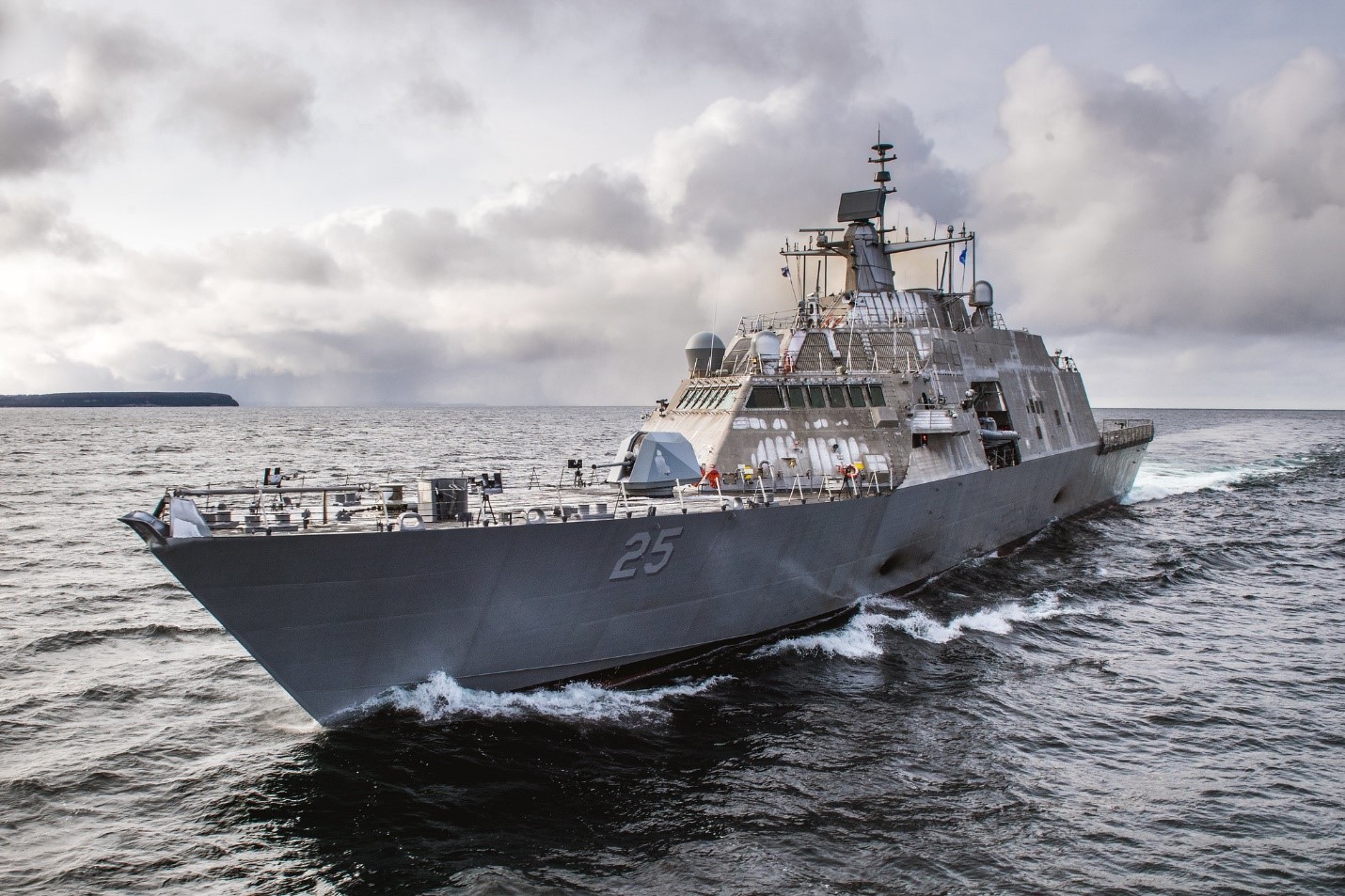
The future USS Cleveland (LCS-31) sat in a light blue cradle, held together by four pins, during USNI News’ recent visit to Marinette. The ship was awaiting its christening and side launch, a “poor man’s way” of putting a ship in the water, according to Vandroff. It’s the last side launch planned at the Wisconsin yard.
Cleveland’s christening marks the end of the Freedom-class ships, which the Navy has sought to rapidly decommission over the last few years because service officials argue the platform can’t perform in the type of conflict the U.S. military is preparing for with a country like China.
On a warm April day in northern Wisconsin shipyard, Robyn Modly, the wife of former Navy undersecretary Thomas Modly, smashed a bottle of champagne across the bow of Cleveland. As the champagne sprayed, four of Vandroff’s best people removed the four pins holding Cleveland in its cradle. But as the ship tipped into the river, it hit a tug boat, making what’s known as a violent endeavor to launch a ship even more stressful.
The Freedom-class ships were also plagued by problems with their propulsion system, particularly the combining gear that joins the vessel’s gas turbines to its diesel engines. RENK Group – which built the combining gear – the Navy, and Lockheed Martin found a solution and are chewing through the line to fix the ships that remain in service, but the Navy is still trying to decommission them in successive budget proposals.
The most recent estimates put the fix at $8 million per ship and the Navy is splitting the cost with Lockheed for the ships that were not already commissioned into service, according to a Navy official.
“The job of a shipyard is to build the ship that the customer orders from them to build. So we are building this ship – in the LCS – that is to the specification that the Navy gave us in the contract to build,” Vandroff said when asked about the Navy’s decommissioning push. “What the Navy does with it at that point is up to them.”
Marinette built Cleveland using the kit required to fix the gear. The future USS Marinette (LCS-25), which was moored next to Cleveland before the launch, has received the gear fix. Lockheed is in the process of fixing the gear on the future USS Nantucket (LCS-25). The future USS Beloit (LCS-29) – which was sitting pierside at Marinette for shaft alignment – will get fixed in October.
With the LCS line winding down, Lockheed says it can carry over much of the workforce to build the Saudi combatant, since it’s similar in size and based on the same design.
As for the future of the Freedom-class ships once they’re out of the yard, Lockheed says that’s up to the Navy.
“That kind of is just noise to us. We’ve got a very important job to build these ships and deliver everything that the Navy has asked for us,” Chris Minster, Lockheed’s director of small combatant programs, told USNI News after Cleveland’s launch.
“What the Navy then decides to do, or how to use the ships, we’ll let the Congress and the Navy sort that out. It doesn’t change what we have to do here to build these ships and deliver the ships.”





